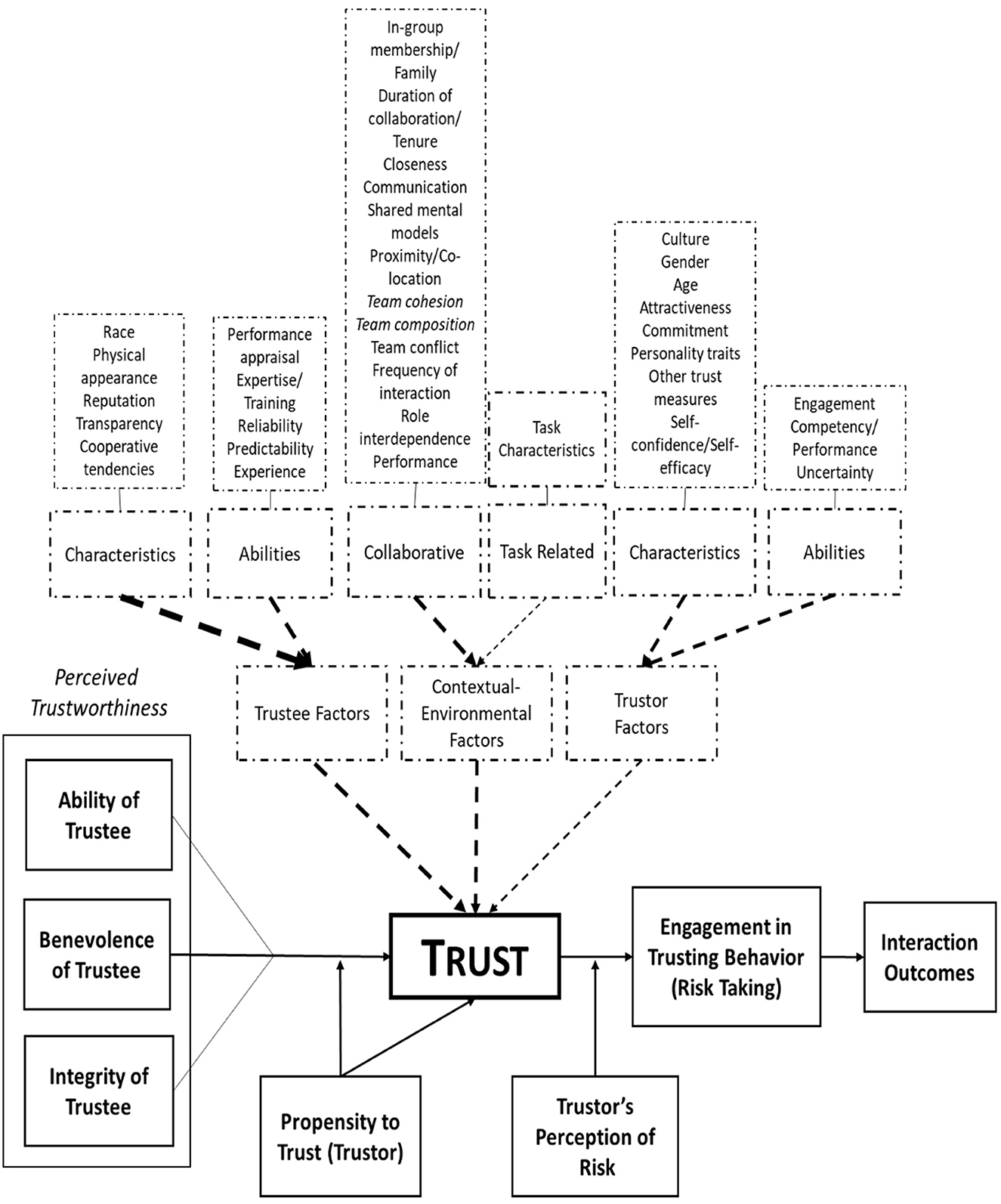- 1Department of Psychology and Institute for Simulation and Training, University of Central Florida, Orlando, FL, United States
- 2Department of Psychology, University of Central Florida, Orlando, FL, United States
- 3Department of Management, University of Alabama, Tuscaloosa, AL, United States
- 4United States Air Force Research Laboratory, Wright Patterson Air Force Base, Dayton, NV, United States
- 5Broky Consulting, LLC, Hillsboro, OR, United States
- 6DEVCOM Army Research Laboratory, Aberdeen Proving Ground, Adelphi, MD, United States
A Correction on
How and why humans trust: A meta-analysis and elaborated model
by Hancock, P. A., Kessler, T. T., Kaplan, A. D., Stowers, K., Brill, J. C., Billings, D. R., Schaefer, K. E., and Szalma, J. L. (2023) Front. Psychol. 14:1081086. doi: 10.3389/fpsyg.2023.1081086
There was a mistake in Figure 9 as published. The incorrect figure was published. The corrected Figure 9 appears below.

Figure 9. Revised model for factors influencing trust. Model is revised from Mayer et al. (1995). Solid lines and solid boxes demonstrate concepts previously uncovered as factors exerting force on trust between people. Dotted lines and boxes demonstrate those newly uncovered factors which were found to affect trust between people. The width of the dotted lines demonstrates the extent to which the factors have an effect on trust.
Supplemental material Appendix A: Studies Used in this Meta-Analysis was omitted. The Supplemental material file has been updated in the original article.
The original version of this article has been updated.
Publisher's note
All claims expressed in this article are solely those of the authors and do not necessarily represent those of their affiliated organizations, or those of the publisher, the editors and the reviewers. Any product that may be evaluated in this article, or claim that may be made by its manufacturer, is not guaranteed or endorsed by the publisher.
Keywords: trustors, trustees, meta-analysis, trust, dispositional trust
Citation: Hancock PA, Kessler TT, Kaplan AD, Stowers K, Brill JC, Billings DR, Schaefer KE and Szalma JL (2025) Correction: How and why humans trust: A meta-analysis and elaborated model. Front. Psychol. 16:1651358. doi: 10.3389/fpsyg.2025.1651358
Received: 21 June 2025; Accepted: 23 July 2025;
Published: 11 August 2025.
Edited and reviewed by: Agata Gasiorowska, University of Social Sciences and Humanities, Poland
Copyright © 2025 Hancock, Kessler, Kaplan, Stowers, Brill, Billings, Schaefer and Szalma. This is an open-access article distributed under the terms of the Creative Commons Attribution License (CC BY). The use, distribution or reproduction in other forums is permitted, provided the original author(s) and the copyright owner(s) are credited and that the original publication in this journal is cited, in accordance with accepted academic practice. No use, distribution or reproduction is permitted which does not comply with these terms.
*Correspondence: P. A. Hancock, cGV0ZXIuaGFuY29ja0B1Y2YuZWR1
 P. A. Hancock
P. A. Hancock Theresa T. Kessler
Theresa T. Kessler Alexandra D. Kaplan2
Alexandra D. Kaplan2